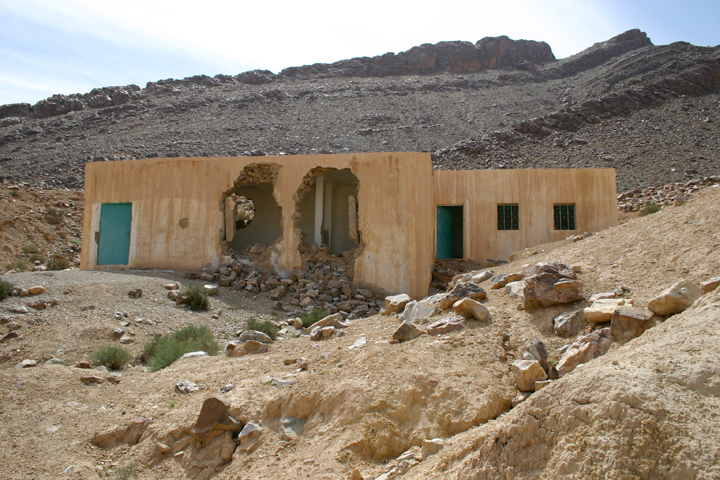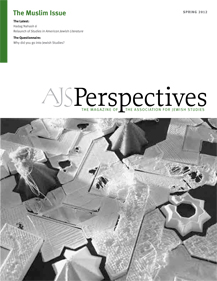
In the last decade, a longing for local Jews in the valleys of Sous, Draa, and Tafilalt has begun to be publicly expressed by a number of Berber activists. In Sous, for instance, a group of teachers and university graduates launched a Berber-Jewish friendship association. Its founders contend that their main objectives were to promote the cultural diversity of the region, disseminate social tolerance, and create economic bridges with Moroccan Jews living abroad.
As it happens, this Berber initiative coincided with Israel's launch of its largescale military operation inside Gaza targeting Hamas political and military leadership. As Al-Jazeera, al-Manar, al-Arabiya, and other Arab satellite news agencies broadcast the Israeli military operation, popular protests broke out in the Middle East and the Islamic world calling on Arab and Islamic leaderships to rise against "the Jewish enemy" and its Western allies. Anti-Jewish and anti-Israeli rhetoric filled Arab news outlets as popular anger rose dubbing the military intervention as a "Gaza Holocaust."
Against the backdrop of this popular movement, a delegation of Moroccan Amazigh teachers visited Yad Vashem to participate in a week-long educational seminar about the teaching of the Shoah. Their objective was to incorporate the neglected subject of the Holocaust in the national school curriculum. In Morocco, Khalid Soufyani, the President of the Moroccan Association for the Support of Palestine and Iraq, led a fierce attack against these Berber activists who called for establishing relations with Moroccan Jews living in Israel. Berber associations were critiqued for their refusal to participate in pro-Palestinian demonstrations against Israel's military operation in Gaza and the West Bank. These accusations were rejected by Ahmed Asid, a leading Amazigh intellectual, who denounced the anti-Jewish discourse of Soufyani and other Islamists.
It is in this fractured national context that Morocco's Jews—who number about five thousand today, mostly live in Casablanca, and include some high-profile figures like royal advisor André Azoulay—were targeted as Zionist and Israeli spies. Soufyani organized demonstrations in Rabat and other cities where people chanted "Khaybar, Khaybar, O Jews! Muhammad's army will return," in a clear reference to the Qur'anic story of the destruction of the Jewish community of Khaybar. Despite all these anti-Jewish tirades, however, the government continued to highlight the long history of Jewish-Muslim co-existence and the cordial relationship between Moroccan kings and their Jewish subjects, even those living in Israel. To many Amazigh activists I interviewed, however, this discourse of tolerance did not go far enough. They were advocating for an even more overt distinction between the Jews of Morocco (and their local role) and the state of Israel.
Let me exemplify this position with the following story. In 2010, I ran into a student in the halls of the University of Cadi Ayyad in Marrakesh. When he realized that I studied Moroccan Jews, he told me:
Moroccan Jews are like a valuable mortgage that cannot be afforded. Moroccans talk a lot about their Jewish subculture to outsiders and boast about their history of tolerance; yet, they refuse to accept that Jews can be Moroccan citizens with full rights and obligations. Our full support and sympathy toward the Palestinian cause have blinded us hindering our acceptance of Moroccan Jews. If we believe that Moroccan Jewish history can be an economic asset worth mortgaging then we should accept their full rights. Otherwise we have to put it for sale and stop using it for our economic advantages.
For this informant and many Berber students from different parts of Sous, Moroccan society is required to rethink its attitude toward local Jews, to accept them as part of its wider multicultural, ethnic, and religious fabric without looking at them through the lens of the Palestinian issue.
All this becomes particularly pressing when it comes to cultural heritage. A dead Jew, a southern Moroccan proverb goes, does not fight a war. The proverb is evidence of Muslims' long-standing respect of Jewish tombs and graveyards. Cemeteries have always been sacred sites. I was told by an elderly man that even in times of conflict, when Jewish shops and sometimes neighborhoods were targeted, Jewish tombs were never violated. The dead are sacred because they are in God's land.
Yet despite this long-held tradition, instances of desecration of Jewish shrines and vandalism in Jewish cemeteries throughout Morocco have been on the rise in the last decades. As Palestinians and Israelis battle over the Holy Land, Moroccan children and youth target Jewish sites and property to express their hatred of the Jewish state, its leaders, and Morocco's Jews as its accomplices. As I traveled throughout southern Morocco in the last ten years, I noticed that many tombs and shrines are vandalized with anti-Jewish and anti-Israeli graffiti. The dead are no longer sacred; they are the only legitimate targets as the majority of the living left for France, Canada, and Israel.
Let me illustrate with another story. In 2010, I took a group of teachers through southern Morocco as part of a Fulbright-Hays federal grant to introduce K–12 teachers to pre-Saharan communities. In Errachidia, we visited two adjacent Jewish cemeteries. In the first, few of the tombs from the early 1900s were in good shape; many were either destroyed by the elements or completely desecrated by local children. Broken plates, black kettles, human hair, and animal bones were laid on some graves. A large green door, decorated with hannukiot, led to the second cemetery. It mainly housed the tombs of three tzaddikim: Rabbi Yahia Lahlou, Rabbi Moul Tria, and Rabbi Moul Sedra, arrivals to Morocco, according to local lore, dating as far back as the destruction of the First Temple.
We were given a tour of the cemetery by the local Muslim Berber guard who was paid the equivalent of 40 U.S. dollars per month by Jews from Casablanca to keep an eye on the property. The old man had been guarding the cemetery since the local Jews left for Israel. He seemed to care about the preservation of the cemetery. But while we chatted about local Jewish history, I noticed graffiti on the outside walls which read: "Sharon go to hell," "Live Palestine," "Jews are pigs," "God's curse on the Jews," "Hitler!" and "Americans are Jews!" As I took a couple of pictures, one the teachers tried to ask me about the meaning of the graffiti. Before I began to translate some of the words, the man interrupted me in a very faint voice: "Do not tell her the exact meanings of what is written in the walls. Children play on these walls and write this nonsense. We respect local Jews." As much as I wanted to conceal the truth from the teacher, I couldn't, and I leaked the secret.
With tourism revenues becoming a pivotal part of the Moroccan economy, Jewish cultural heritage is increasingly seen as an integral part of national history. This movement started first as the private endeavor of a few Moroccan Jews. Later, the state got involved through its ministries of culture and tourism, recognizing that the country can capitalize on Moroccan Jewish culture by marketing its discourse of tolerance to Jews from the Moroccan Diaspora. Even King Mohammed VI recently joined the initiative by supporting Morocco's Jewish community in the restoration and maintenance of its historical Jewish cemeteries. By preserving Jewish graveyards through the country, the state acknowledges the importance of pilgrimage events (hillulot) as central to its tourism and national revenues.
Against this opportunistic and potentially exploitative policy, Morocco's Jews are trying to reclaim heritage through the creation of a virtual Jewish milieu, centered around the world of the dead. As cemeteries and synagogues are being restored throughout the country, local Jews have launched a large online project, posting images and videos of Jewish graveyards and tombs for a global Jewish audience.
But the crux of the matter remains. The conservation of Jewish cemeteries will never fully succeed unless Moroccan Jewish history and culture is taught at the country's schools and universities. Otherwise, Jewish cemeteries, shrines, and neighborhoods will remain nothing but international tourist attractions, overlaid locally by the Israeli-Palestinian conflict.

